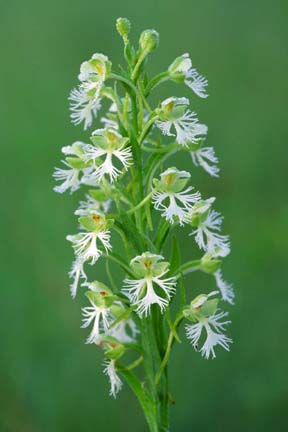
Platanthera leucophaea, commonly known as the prairie white fringed orchid or eastern prairie fringed orchid, is a rare species of orchid native to North America. It is a federally threatened species, protected since October 30, 1989 under the Endangered Species Act of 1973. In Canada, it has been listed endangered under Schedule 1 of the Species at Risk Act since 2005. In 2014, the International Union for Conservation of Nature assessed it as "least concern."
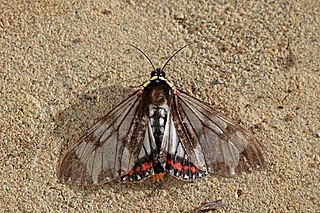
Dysschema is a genus of tiger moths in the family Erebidae. The genus was erected by Jacob Hübner in 1818. The genus contains some of the more showy moths of the southwestern United States.

Eucereon is a genus of tiger moths in the family Erebidae. The genus was erected by Jacob Hübner in 1819.
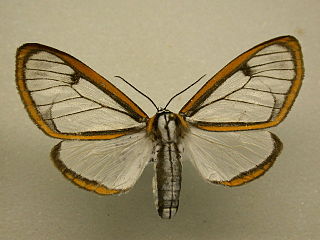
Hyalurga is a genus of tiger moths in the family Erebidae. The genus was erected by Jacob Hübner in 1819.
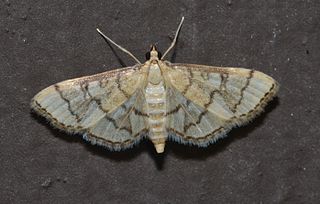
Blepharomastix is a genus of moths of the family Crambidae described by Julius Lederer in 1863.

Dysschema neda is a moth of the family Erebidae first described by Johann Christoph Friedrich Klug in 1936. It is found in Brazil.

Dysschema Lycaste is a moth of the family Erebidae first described by Johann Christoph Friedrich Klug in 1836. It is found in Mexico, Guatemala, Honduras and Costa Rica.
Meza leucophaea, the margined missile, is a butterfly in the family Hesperiidae. It is found in Senegal, Guinea, Sierra Leone, Liberia, Ivory Coast, Ghana, Nigeria, Cameroon and Gabon. The habitat consists of forests.

The Pericopina is a subtribe of tiger moths in the family Erebidae. The subtribe was described by Francis Walker in 1869.
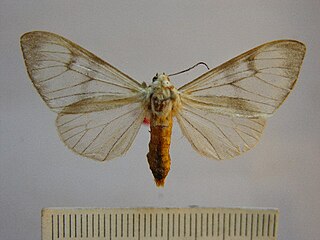
Dysschema amphissum is a moth of the family Erebidae first described by Carl Geyer in 1832. It is found in south-eastern Brazil, ranging from southern Minas Gerais and Rio de Janeiro, south to Rio Grande do Sul.
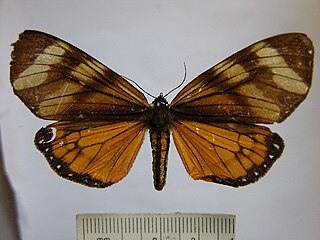
Dysschema eurocilia is a moth of the family Erebidae first described by Pieter Cramer in 1777. It is a common species throughout tropical America, where it has been recorded from the Antilles, Central America and South America.
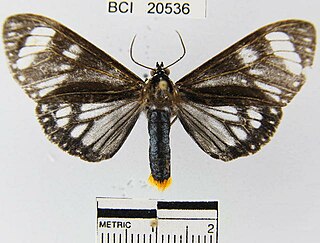
Dysschema perplexum is a moth of the family Erebidae first described by William Schaus in 1910. It is found in Panama and Costa Rica.
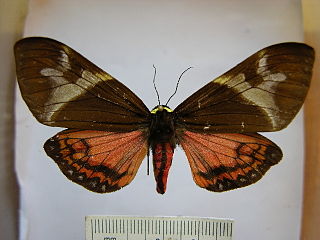
Dysschema lygdamis is a moth of the family Erebidae first described by Herbert Druce in 1884. It seems restricted to the mountains of Costa Rica and Panama.
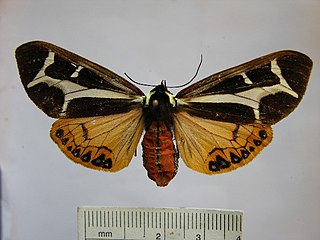
Dysschema thetis, the northern giant flag moth, is a moth of the family Erebidae. The species was first described by Johann Christoph Friedrich Klug in 1836. It is found from the south-western United States to north-western Mexico.
Dysschema subapicalis is a moth of the family Erebidae first described by Francis Walker in 1854. It is restricted to the Atlantic forests of south-eastern Brazil.

Dysschema thyridinum is a moth of the family Erebidae first described by Arthur Gardiner Butler in 1871. It is found in Ecuador and Peru.

Dysschema marginalis is a moth of the family Erebidae first described by Francis Walker in 1855. It is found in Venezuela, Ecuador and Colombia.
Dysschema larvata is a moth of the family Erebidae. It was described by Francis Walker in 1856. It is found in Brazil.
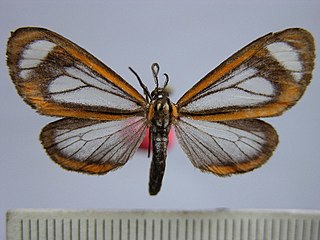
Hyalurga leucophaea is a moth of the family Erebidae. It was described by Francis Walker in 1854. It is found in Venezuela and Peru.
















